History of the Florida Highway Patrol
FHP in the 1970s
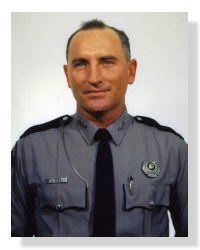 John C. Hagerty, In the Line of Duty
John C. Hagerty, In the Line of Duty
End of Watch: Wednesday, March 18, 1970
Trooper Hagerty was piloting a traffic plane over Lakeland when he was struck by a low-flying U.S. Navy jet. He had served the citizens of Florida, with the Florida Highway Patrol, for 13 years.
His career with FHP began October 15, 1956. He was in the 15th recruit class in Tallahassee, from October 15 to December 7, 1956. He was stationed in Frostproof, Punta Gorda, Stuart and Orlando. At the time of his death, he was 44.
A Dream Becomes Reality
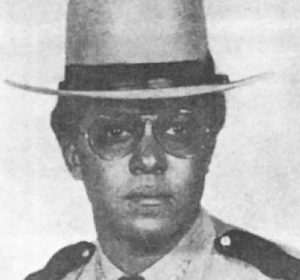 Alphonso Lofton, a young Marine finishing out a five-year hitch with the United States Marine Corps, took one look at a Florida Highway Patrol trooper investigating a hit-and-run accident in 1966 and decided that’s what he wanted to be when he got out of the Marine Corps. He was honorably discharged in August, 1968 having attained the rank of sergeant. After his discharge, he attended Lake City Community College.
Alphonso Lofton, a young Marine finishing out a five-year hitch with the United States Marine Corps, took one look at a Florida Highway Patrol trooper investigating a hit-and-run accident in 1966 and decided that’s what he wanted to be when he got out of the Marine Corps. He was honorably discharged in August, 1968 having attained the rank of sergeant. After his discharge, he attended Lake City Community College.
His dream became a reality on May 1, 1970, when Trooper Alfonso Lofton became the first African-American member of Florida’s “Finest” and set the stage for many of the other great men and women to follow in his footsteps. He attended the 38th Recruit Class at the Florida Highway Patrol Training Academy in Tallahassee from January 10, 1971 through April 3, 1971. Upon graduation, he returned to Miami where he was assigned to field operations. On January 1, 1973, he was promoted to traffic homicide investigator. On March 9, 1981, he was assigned as a recruiter for Troop E.
Trooper Lofton had the distinction of being the first African-American Florida Highway Patrolman. In March, 1973, Trooper Lofton was appointed to the Equal Employment Opportunity Committee of the Department. His efforts to recruit more African-Americans into the ranks of the Florida Highway Patrol earned him recognition from the patrol and from the community.
In recognition of his efforts, he received the Martin Luther King Brotherhood Award and was honored by the State of Florida. The Florida Commission of Human Relations also commended him for his outstanding service with the Florida Highway Patrol.
Trooper Alphonso Lofton succumbed to multiple sclerosis on February 25, 1984, at the age of thirty-nine. His distinguished career with the Florida Highway Patrol was cut short by this tragic illness. Trooper Alphonso Lofton’s outstanding record of service to the citizens of the State of Florida exemplified character, honor and integrity. On August 19, 1988, the Troop E Headquarters Station was dedicated to the memory of Trooper Alphonso Lofton.
Historic First for FHP and African-Americans
On July 1, 1971, Joe Willie DeCoursey officially joined the Florida Highway Patrol. He reported to the FHP Training Academy on July 4, 1971 and returned to Fort Lauderdale upon graduation from the academy.
In 1973, Joe was promoted to traffic homicide investigator and transferred to Troop E – Miami where he attended Biscayne University. Finally, in September 1979, Joe received his long awaited transfer home to Gainesville where he valiantly served the patrol and the community of Gainesville until his retirement on July 31, 1996. Trooper Joe W. DeCoursey is the first African-American trooper to reach 25 years of service with the Florida Highway Patrol.
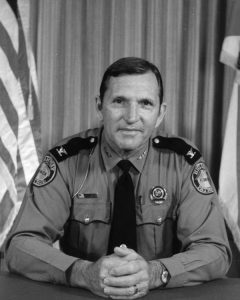 Colonel J. Eldridge Beach
Colonel J. Eldridge Beach
1972-1982
On March 1, 1972, Lieutenant Colonel J. Eldridge Beach was promoted to Colonel and Director of the Florida Highway Patrol. Colonel Beach was born and raised in St. Petersburg where he was educated in the St. Petersburg public schools. After high school he joined the U.S. Marine Corps and served in the South Pacific during World War II. He received a Purple Heart for wounds sustained in the Battle of Okinawa and also received the Presidential Unit Citation. He was discharged in 1946.
Upon completion of his military obligations, Colonel Beach finished high school and then entered the University of Florida in 1947 where he made all-state honors in football and basketball and set four track records. In 1951 he won the State Heavyweight Golden Gloves Boxing Championship. He was inducted into the University of Florida’s Football Hall of Fame.
Colonel Beach joined the Florida Highway Patrol as a Patrolman in 1951 and attended the 8th Recruit Training School. He left in 1952 to become district supervisor with the State Beverage Department. In 1953 he received the Junior Chamber of Commerce Award for the outstanding police work in Leon County. He went to work for the Attorney General’s Office in 1954 as a special investigator and returned to the Florida Highway Patrol in 1957 where he came up through the ranks to Colonel and Director of the Florida Highway Patrol in 1972.
One of the first programs he introduced to the patrol required all members of the patrol to maintain a high level of physical fitness. Adherence to weight standards became part of personnel evaluations. Under Col. Beach, the patrol initiated programs that emphasized hiring of more minority troopers and handicapped individuals for communications and office personnel.
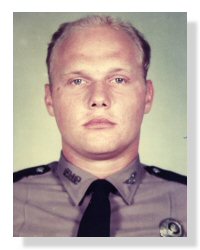 Herman T. Morris, In the Line of Duty
Herman T. Morris, In the Line of Duty
End of Watch: Thursday, March 16, 1972
On March 16, 1972, Trooper Morris was on routine patrol in West Palm Beach, when another vehicle forced his cruiser into a bridge railing. He had served the citizens of Florida, with the Florida Highway Patrol, for 3 years.
His career with FHP began August 11, 1969. He was in the 36th recruit class in Tallahassee, from September 1 to November 22, 1969. He was stationed in Fort Lauderdale and West Palm Beach. At the time of his death, he was 27.
Law and Order Prevails
In 1972, a special task force of 225 troopers was trained and equipped for crowd control and sent to Miami Beach for both the Republican and Democratic National Conventions. State forces arrested approximately 1,000 demonstrators and during the last day of the convention activity, approximately 25 FHP personnel required medical attention.
Pay Raises for Specialized Jobs
In July 1972, approximately 180 troopers were promoted to the classification of Trooper II in order to give recognition and pay raises for two specialized jobs; Traffic Homicide Investigator and Chemical Test for Intoxication Instructor.
On December 15, 1976, Terry C. Davis began his career as a radio operator in Orlando. In June of 1977, his mother’s medical condition became grave, cancer. The patrol didn’t have a radio operator position open when they transferred him to Panama City, but he was able to get a position with the Division of Driver License. A month later his mother died.
Terry Davis obtained his Federal Communications Certificate in January 1980, and transferred to Panama City. On May 1, 1983, he was sworn in as a member of the 68th recruit class. Trooper Davis’ first duty assignment was Troop D – Orlando and remained there when he was promoted traffic homicide investigator. On May 1, 1987, he was promoted to sergeant and transferred to Troop L – Lantana. On November 1, 1992 he was promoted to lieutenant and assigned to Troop K in Pompano. He transferred to Troop K – West Palm District on September, 1993.
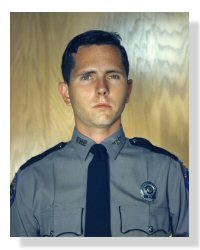 Charles W. Parks, In the Line of Duty
Charles W. Parks, In the Line of Duty
End of Watch: Tuesday, February 6, 1973
Trooper Parks was shot during the apprehension of two armed robbery suspects on Interstate 95 in Jacksonville. He had served the citizens of Florida, with the Florida Highway Patrol, for 6 years.
His career with FHP began November 16, 1967. He was in the 35th recruit class in Tallahassee, from January 6 to March 29, 1969. He was stationed in Yulee. At the time of his death, he was 28.
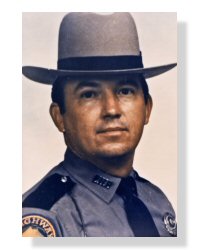 Claude H. Baker, Jr., In the Line of Duty
Claude H. Baker, Jr., In the Line of Duty
End of Watch: Saturday, November 17, 1973
Trooper Baker was shot after stopping an escaped prisoner in a stolen car, on US 41 in Sarasota. He had served the citizens of Florida, with the Florida Highway Patrol, for 9 years.
His career with FHP began January 6, 1964. He was in the 24th recruit class in Tallahassee, from January 6 to March 28, 1964. He was stationed in Key West and Venice. At the time of his death, he was 32.
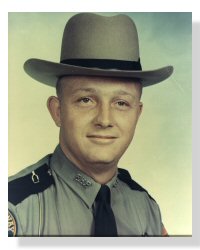 Ronald G. Smith, In the Line of Duty
Ronald G. Smith, In the Line of Duty
End of Watch: Sunday, December 23, 1973
Trooper Smith was shot while checking out two men in a parked car off US 19 in Inglis. They attempted to flee but two deer hunters, who had witnessed the shooting, wounded one of them and then captured both. He had served the citizens of Florida, with the Florida Highway Patrol, for 8 months.
His career with FHP began May 1, 1973. He was in the 43rd recruit class in Tallahassee, from June 25 to September 14, 1973. He was stationed in Homosassa. At the time of his death, he was 28.
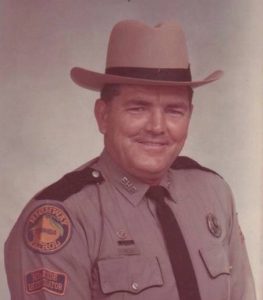 Wilburn A. Kelly, In the Line of Duty
Wilburn A. Kelly, In the Line of Duty
End of Watch: Saturday, March 23, 1974
Trooper Kelly was on routine patrol in St. Augustine, when another vehicle struck his cruiser from behind. He had served the citizens of Florida, with the Florida Highway Patrol, for 22 years.
His career with FHP began November 1, 1952. He was in the 11th recruit class at Eglin AFB, from October 7 to November 7, 1953. He was stationed in Panama City, Fort Walton Beach, Marianna and St. Augustine. At the time of his death, he was 43.
Charles E. Campbell, In the Line of Duty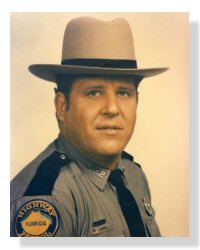
End of Watch: Saturday, November 16, 1974
Trooper Campbell was shot after being kidnapped during a routine traffic stop in Perry. He was found in Georgia with another kidnapped victim. The suspect, an escaped fugitive, was later apprehended and while trying to gain control of an officer’s weapon during the arrest, was shot and killed by an FBI agent. Trooper Campbell had served the citizens of Florida, with the Florida Highway Patrol, for 9 years.
His career with FHP began October 1, 1965. He was in the 30th recruit class in Tallahassee, from August 29 to November 19, 1966. He was stationed in Venice and Perry. At the time of his death, he was 35.
Operation “Gatorbait” Breaks up Theft Ring
The investigation section of the Patrol, working with the FBI and the National Auto Theft Bureau, conducted a “sting” operation known as “Gatorbait” which culminated in the arrest and conviction of 32 individuals involved in the distribution of stolen vehicles. Sixty individuals were indicted and numerous leads involving other theft rings were developed.
Operation Gatorbait was a $300,000 federally funded anti-fencing project in the central Florida area, initiated by the Florida Highway Patrol, the Federal Bureau of Investigation and the National Auto Theft Bureau. Gatorbait was conducted for 17 months and covered an 18 state area, with the majority of activities taking place in central Florida.
The indictments stemming from the operation listed a broad range of crimes including: possessing stolen property, insurance fraud, grand theft, murder, arson and the possession and distribution of narcotics with a conviction rate of approximately 95 percent.
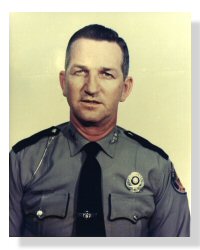 Kenneth E. Flynt, In the Line of Duty
Kenneth E. Flynt, In the Line of Duty
End of Watch: Thursday, January 1, 1976
Trooper Flynt was shot when opening his door to a neighbor, who had run to his home for help when being victimized by an armed gunman intent on stealing her car. He had served the citizens of Florida, with the Florida Highway Patrol, for 19 years.
His career with FHP began October 15, 1956. He was in the 15th recruit class in Tallahassee, from October 15 to December 7, 1956. He was stationed in Tampa. At the time of his death, he was 52.
Phillip A. Black, In the Line of Duty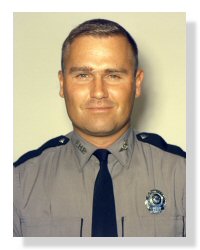
End of Watch: Friday, February 20, 1976
Trooper Black was shot while investigating a suspicious vehicle parked at a rest stop on I-95 near Pompano Beach. Corporal Donald Irwin of the Ontario Provincial Police, Canada, vacationing in Florida, was riding along with Trooper Black. He went to assist and was also shot and killed. Trooper Black had served the citizens of Florida, with the Florida Highway Patrol, for 9 years.
His career with FHP began April 1, 1967. He was in the 32nd recruit class in Tallahassee, from August 2 to October 25, 1967. He was stationed in Key West and Fort Lauderdale. At the time of his death, he was 39.
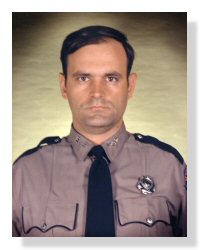 Richard D. Howell, In the Line of Duty
Richard D. Howell, In the Line of Duty
End of Watch: Monday, August 2, 1976
Trooper Howell was in an automobile crash while in pursuit on US 441 in Orlando. He had served the citizens of Florida, with the Florida Highway Patrol, for 1 year.
His career with FHP began February 3, 1975. He was in the 49th recruit class in Tallahassee, from May 12 to August 8, 1975. He was stationed in Orlando. At the time of his death, he was 30.
Bradley S. Glascock, In the Line of Duty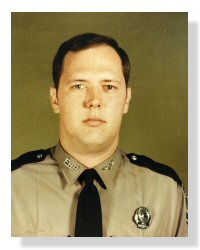
End of Watch: Thursday, August 4, 1977
Trooper Glascock was shot during a traffic stop at a toll booth on State Road 836 in Miami. The events that followed, included a massive manhunt for the driver and roadblocks set up all over Miami. The suspect turned himself in when he couldn’t leave town. This case motivated the State Cabinet to buy bullet-resistant vests for all State Troopers. Trooper Glascock had served the citizens of Florida, with the Florida Highway Patrol, for 1 year.
His career with FHP began June 6, 1976. He was in the 51st recruit class in Tallahassee, from June 7 to September 3, 1976. He was stationed in Miami. At the time of his death, he was 24.
New Equipment
Bullet-proof vests, hand-held radios, and new winter style jackets were authorized for all patrol members in August, 1977.
On August 16, 1977, less than two weeks after Trooper Bradley Glascock was gunned down on a Miami Expressway, the State Cabinet authorized the patrol to purchase bullet-proof vests for all Troopers. Florida was the first state to provide vests to all troopers. The vests will repel bullets up to a .357 Magnum in the front and a .38 caliber in the back and will weigh less than four pounds. All 1,200 troopers were fitted with a vest.
First Female Trooper
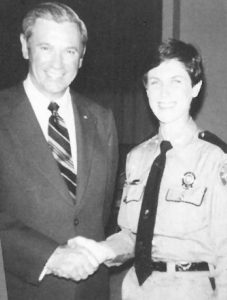 Patricia Phillips was the first female trooper hired by FHP. She started on October 17, 1977. At that time, troopers were hired before they went to the Academy. She rode with a trainer for 30 days and then was put on the road by herself. She was a member of the 54th Recruit Class.
Patricia Phillips was the first female trooper hired by FHP. She started on October 17, 1977. At that time, troopers were hired before they went to the Academy. She rode with a trainer for 30 days and then was put on the road by herself. She was a member of the 54th Recruit Class.
Pictured right: Governor Reubin Askew congratulates Trooper Patricia Phillips at her graduation.
At the academy, she boxed with the men. When she was boxing, if her opponent hit her in the head, the head gear would swivel around and she would be looking out the ear hole. She said she went through most of the academy with a black eye and a goose egg on her forehead because the headgear didn’t fit. Also, the mouth pieces were one size. She wore men’s uniforms and had them altered to fit her. “I had to alter them so much, the back pockets met in the middle.”
“It was an experience and I wouldn’t trade it for the world.” Trooper Phillips has always been in the Miami area. When she was a recruiter, she served with the first African-American trooper, Al Lofton.
Highest Ranking African-American
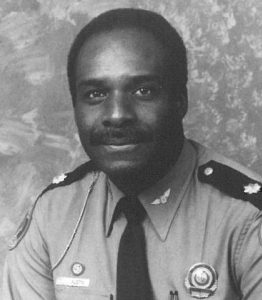 In August 1974, Larry L. Austin began his professional career as a high school teacher in St. Croix, U.S. Virgin Islands. He taught school until June of 1977, when he felt the desire to change careers. He decided he would like to become a member of the Florida Highway Patrol. On January, 1978, he entered the FHP Academy. His first duty station was Troop C – Tampa.
In August 1974, Larry L. Austin began his professional career as a high school teacher in St. Croix, U.S. Virgin Islands. He taught school until June of 1977, when he felt the desire to change careers. He decided he would like to become a member of the Florida Highway Patrol. On January, 1978, he entered the FHP Academy. His first duty station was Troop C – Tampa.
This was the beginning of his rise through the ranks. While in Tampa, in to 1982, he became a traffic homicide investigator. In November 1984, he was promoted corporal and assigned to Dade County, District III. He was the first line supervisor for a squad of nine troopers. He was also a Special Response Team Squad Leader and Traffic Homicide Investigation Coordinator. In October 1985, he was promoted to sergeant. In March 1989, he was promoted to lieutenant and assigned to District I in Miami. In October 1990, he was transferred to the Florida Highway Patrol Training Academy in Tallahassee as a Law Enforcement Training Officer. In February 1992, he was promoted to captain and transferred to Troop L in Lantana, Florida, where he was the district commander.
In November 1992, he was promoted to major and transferred back to the training academy as Chief Training Officer. He was responsible for commanding and overseeing the planning, development and administration of all recruit career development, and specialized training schools for the Division and its personnel.
In July 1993, he was promoted to Chief, Bureau of Field Operations, Region III. He is responsible for the overall command and supervision of three troop commanders in Troops E, L & K.
Chief Larry L. Austin is affiliated with the Kappa Kappa Psi Honorary Band Fraternity, Music Educators National Conference, National Organization of Black Law Enforcement Executives, State Law Enforcement Chief’s Association, Florida Police Chief’s Association, Florida Sheriff’s Association, Florida Peace Officer’s Association, and Command Officer’s Association.
Chief Larry Austin has maintained his Department of Education Teacher’s Certificate. In order to do this, he has taken continuing education studies throughout his career as a law enforcement officer. He has a very impressive educational background, in that he holds a Bachelor of Science Degree from Florida A & M University, as well as graduate studies at the University of South Florida, Florida State University, and Nova University.
He also has taken numerous career development courses at the Florida Highway Patrol Academy, Institute of Police Technology and Management at the University of North Florida, Southeast Florida Institute of Criminal Justice at Miami-Dade Community College, Lively Criminal Justice Training Academy, and the Florida Department of Law Enforcement Chief’s Executive Seminar.
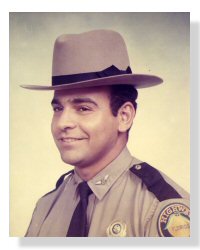 Elmer C. Barnett, III, In the Line of Duty
Elmer C. Barnett, III, In the Line of Duty
End of Watch: Tuesday, February 14, 1978
Trooper Barnett, during a traffic stop in Miami, was standing away from the roadway with the original violator when another vehicle ran off the road and struck him. He had served the citizens of Florida, with the Florida Highway Patrol, for 5 years.
His career with FHP began May 1, 1973. He was in the 44th recruit class in Tallahassee, from September 24 to December 14, 1973. He was stationed in Miami. At the time of his death, he was 30.
FHP finds Kimberly Diane Leach
On February 19, 1978, the most massive missing person search in the history of Florida began in Columbia County by the Florida Highway Patrol under the guidance of Colonel J. E. Beach. A twelve year old girl, Kimberly Diane Leach, who had been abducted and murdered by Theodore Robert Bundy near Lake City.
The missing girl’s body was found near the Suwannee River on April 7, 1978, by the Florida Highway Patrol search party. According to the State Attorney of the Third Judicial Circuit, the case against Bundy would not have gone to trial if the Patrol had not found the victim.
Youngstown Train Derailment
In the early morning hours of February 26, 1978, the sleepy town of Youngstown was awakened by the derailment of 47 cars of a Bay Line freight train.
A chlorine tank car ruptured, releasing deadly chlorine vapor that left eight dead and 138 injured. The eight deaths and most of the injuries resulted when motorists on U.S. 231 drove into the deadly gas cloud which looked like a patch of fog.
Florida Highway Patrol troopers and Bay County deputies, risking serious injury to themselves, prevented further loss of lives by blocking vehicular traffic on U.S. 231 and evacuating approximately 1,000 local residents.
The neutralization of the chlorine and the other dangerous chemicals required six days. During this time, 33 troopers and supervisors worked over 850 hours on roadblocks surrounding the evacuated areas.
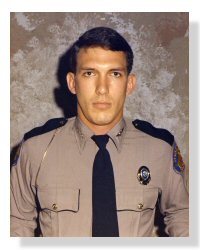 Alvin V. Kohler, In the Line of Duty
Alvin V. Kohler, In the Line of Duty
End of Watch: Tuesday, September 19, 1978
Trooper Kohler was shot by a runaway teenager while he was assisting a disabled motorist. A tow truck driver at the scene was also shot and killed. Trooper Kohler had served the citizens of Florida, with the Florida Highway Patrol, for 1 year.
His career with FHP began October 17, 1977. He was in the 54th recruit class in Tallahassee, from January 8 to April 7, 1978. He was stationed in Miami. At the time of his death, he was 23.
Consent Decree
In 1979, a Federal Lawsuit filed against the State of Florida by the United States Department of Justice alleging race and sex discrimination in employment by the Florida Highway Patrol, the State entered into a settlement with the Justice Department. The settlement was incorporated into a Consent Decree entered by the Federal Court for the Northern District of Florida on July 12, 1979. The Consent Decree required the Patrol to hire more minorities and women.
Truckers Strike
In June 1979, an organization called Florida Independent Truckers Rights Association, called a strike which stopped all deliveries of gasoline from Port Everglades. The entire economy of South Florida was about to be brought to its knees as 1,500 service stations were out of gasoline.
Governor Bob Graham declared South Florida to be in a disaster emergency. He called in 1,800 National Guardsmen to transport the fuel with Florida Highway Patrol escorts. The Governor, by executive order number 79-43, directed the Florida Highway Patrol to coordinate all law enforcement and military efforts to distribute petroleum products to South Florida.
Five hundred and eighty-four truckloads of fuel were escorted by the time the strike ended on June 25th. Approximately 25 Troop E troopers and 25 troopers from outside Troop E participated in the detail under the direction of Major J. E. Hicks and Captain J. W. Carmody.
Hurricane Frederick Slams into Pensacola
In September of 1979, the western tip of Florida’s panhandle was besieged by nature’s most feared disaster . . . a hurricane named Frederick. Frederick struck Pensacola with the most severe winds and tidal surge ever dealt to this hurricane conscious community.
Approximately 12,000 residents had been evacuated from coastal areas in preparation for Frederick; however, one person died and 97 were injured. There were 18,000 homes damaged or destroyed, leaving 72,000 people homeless. Total destruction attributed to Frederick in the Pensacola community was in excess of $51 million. Health, traffic and looting problems were major in the wake of the storm. The Florida Highway Patrol was called in to assist as the community was without power for 97 hours and major highways, U.S. 98, I-10 and U.S. 90, were impassable. A total of fifty troopers and supervisors worked 1,400 man hours during the four days of disaster relief.
Investigation Section
During the period of 1979-1980 while conducting 864 investigations the section made 383 arrest and recovered 274 stolen vehicles valued at 2.7 million dollars. The section also has the responsibility of investigation all Workman’s Compensation claims, the security of all FLHSMV revenue documents and the security of all Department facilities. The section has the responsibility of polygraph pre-employment screening of all trooper applicants and internal affairs investigations as assigned by the Director.
One Stop Service
“One Stop Service” was initiated by co-locating the Florida Highway Patrol, Driver Licenses, and Motor Vehicles into one building.

Dave Kerner, Executive Director